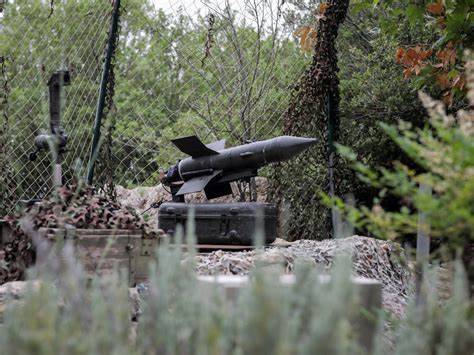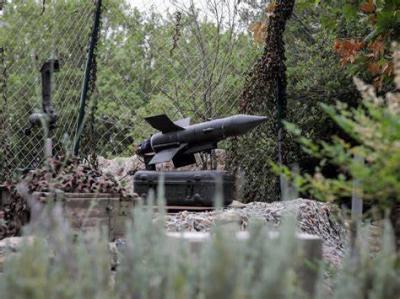Media reports state that "Hezbollah" is one of the most heavily armed non-state groups in the world and a powerful player in the Iran-backed resistance axis opposing Israel and American influence in the Middle East. Hezbollah showcased part of its arsenal during more than eight months of reciprocal fire with Israel, which erupted alongside the Gaza War. The cross-border conflict between Lebanon and Israel has raised fears of further escalation between the two adversaries, who last fought a significant war in 2006.
Here’s an overview of Hezbollah's military arsenal:
**Overview**
Hezbollah's military strength is based on a massive stockpile of rockets. It is estimated that they possess up to 150,000 rockets and projectiles of various types and ranges, according to the CIA World Factbook. Hezbollah claims to have rockets capable of hitting all areas of Israel. Although many of these rockets are unguided, the group also possesses precision-guided munitions, drones, anti-tank, anti-aircraft, and anti-ship missiles. Iran is the main supporter and arms supplier to Hezbollah. Experts say that the Islamic Republic sends weapons to the group via land routes through Iraq and Syria, both of which Tehran has close relations with and significant influence in. Many of the group's weapons are Iranian, Russian, or Chinese models.
Hezbollah's Secretary-General, Hassan Nasrallah, outlined in 2021 that the group has 100,000 fighters. The CIA World Factbook estimates that in 2022, the number of fighters was around 45,000, divided into approximately 20,000 regulars and 25,000 reservists.
**Anti-Tank Missiles**
Hezbollah used guided anti-tank missiles extensively during the 2006 war. The group redeployed guided missiles during the recent round of fighting, targeting Israeli positions along the border. Hezbollah’s anti-tank arsenal includes Russian-made Kornet missiles. According to a report broadcast by the Iran-aligned Al Mayadeen network, Hezbollah also used an Iranian-made guided missile known as "Masa" for the first time during the recent fighting. An Israeli Alma Center report described the "Masa" missile as an anti-tank weapon capable of hitting targets outside the line of sight, with the ability to change course and attack from above. The report indicated that this missile belongs to a family of weapons manufactured by Iran through reverse engineering based on the Israeli Spike missile family, and that it is the "most significant product" in Hezbollah's arsenal.
**Anti-Aircraft Missiles**
On October 29, Hezbollah announced that it shot down an Israeli drone in southern Lebanon using a surface-to-air missile, marking the first time it had publicly acknowledged the use of such weapons, which had long been presumed to be in its arsenal. Since then, Hezbollah has employed surface-to-air missiles on several occasions, including shooting down Israeli drones of the Hermes 450 and Hermes 900 models.
**Drones**
Hezbollah has launched explosive-laden drones at Israel multiple times during the recent hostilities. The group has used drones in some of its more complex attacks, keeping Israeli air defenses preoccupied while other explosive-laden drones were flown toward their targets. The organization recently announced it had conducted attacks using drones that dropped bombs and returned to Lebanon, rather than merely flying towards their targets. Hezbollah did not specify the payload of those drones. They claim that their drones include locally assembled Ayoub and Marsad models, which experts say can be produced cheaply and in large quantities. Last year, Israel accused Iran of building a drone landing site in southern Lebanon that could be used for launching attacks. A non-Israeli source familiar with the site indicated that it could accommodate larger drones that could possibly be armed.
**Rockets and Ground Attack Munitions**
Unguided munitions made up the majority of Hezbollah's rocket arsenal during the recent 2006 war with Israel, when the group fired around 4,000 rockets at Israel, most notably Russian-made Katyusha rockets with a range of up to 30 kilometers. Nasrallah stated that the most significant change in the group's arsenal since 2006 has been the expansion of its precision-guidance capabilities. In 2022, he mentioned that Hezbollah can provide thousands of rockets with guidance systems to turn them into precision-guided missiles. The group possesses Iranian models such as Ra'ad, Fajr, and Zelzal missiles, which boast stronger payloads and longer ranges than Katyusha rockets. The rockets fired by Hezbollah at Israel during the Gaza War since October have included Katyusha and Burkan missiles with explosive payloads ranging between 300 and 500 kilograms. Indicating the potential damage they could inflict now, Nasrallah implicitly threatened in 2016 that Hezbollah could target ammonia containers in the northern Israeli coastal city of Haifa, stating that the outcome would be "like a nuclear bomb."
**Anti-Ship Missiles**
Hezbollah demonstrated for the first time that it possessed anti-ship missiles in 2006 when it struck an Israeli warship 16 kilometers off the coast, resulting in the death of four Israelis and damage to the ship. Sources knowledgeable about Hezbollah's arsenal indicate that since the 2006 war, it has acquired the Russian-made Yakhont anti-ship missile, which has a range of up to 300 kilometers. Hezbollah has never confirmed its possession of this weapon. The group also broadcast footage claiming to show more of those anti-ship missiles used in 2006.




